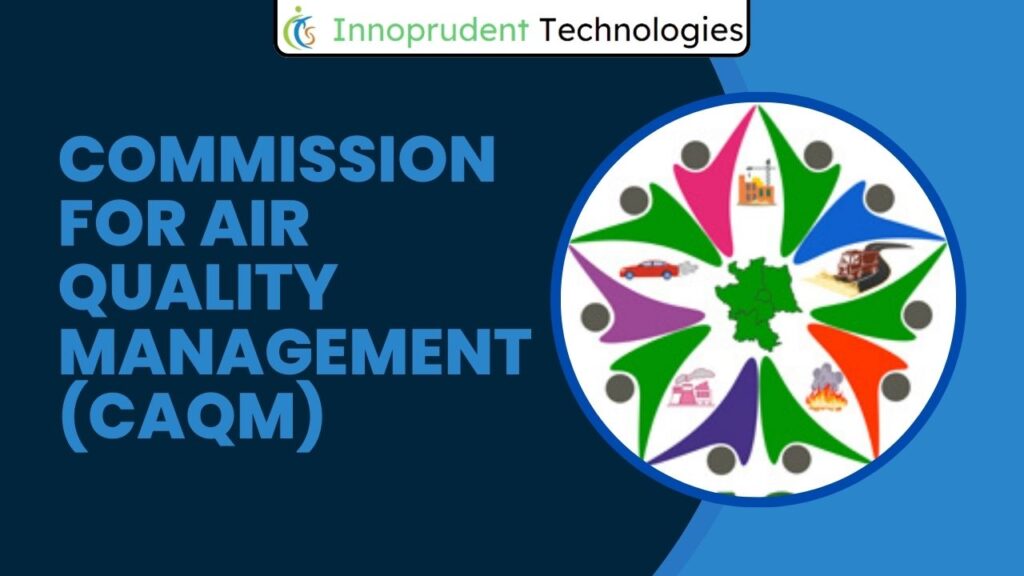Clean air is not a luxury; it is a fundamental right of every citizen. However, in recent years, the air quality in India’s National Capital Region (NCR) and its adjoining areas had deteriorated to alarming levels, posing significant threats to public health and the environment. Recognizing the urgency of the situation, the Government of India established the Commission for Air Quality Management (CAQM) in August 2021.
This statutory body serves as a beacon of hope, aiming to breathe new life into the region’s air quality. In this comprehensive guide, we will explore the functions, composition, achievements, challenges, and recommendations of CAQM, shedding light on its critical role in transforming the air quality landscape in the NCR and beyond.
Functions of the CAQM
The CAQM’s multifaceted role in addressing air pollution can be summarized through its key functions:
Development and Implementation of Air Quality Plans: The CAQM is tasked with developing and executing comprehensive plans for air quality management in the NCR and adjoining regions. These plans are essential blueprints for combating air pollution effectively.
Coordination of Efforts: Air quality management involves a multitude of agencies at different levels of governance. The CAQM serves as a vital coordinating body, ensuring that efforts to combat air pollution are synergized and harmonized.
Monitoring and Assessment: To make informed decisions, the CAQM continuously monitors and assesses air quality in the region. Identifying pollution sources and understanding the dynamics of air pollution are essential steps in devising effective strategies.
Recommendations for Pollution Reduction: The CAQM plays a pivotal role in recommending measures aimed at reducing air pollution and safeguarding public health. These recommendations are based on scientific evidence and data.
Enforcement of Environmental Laws: To uphold environmental standards, the CAQM enforces laws and regulations related to air quality. This ensures that those who flout rules face appropriate consequences.
Composition of the Commission for Air Quality Management
The CAQM is composed of a diverse group of individuals, each bringing unique perspectives and expertise to the table. The key members of the CAQM include:
- Chairperson: A retired Judge of the Supreme Court of India leads the CAQM, bringing legal acumen and impartiality to the organization.
- Government Representatives: The Secretary of the Ministry of Environment, Forest, and Climate Change, Government of India, and the Chief Secretaries of the four NCR states are vital members of the CAQM. Their roles are essential in aligning central and state government efforts.
- Local Authorities: Commissioners of the Municipal Corporations of Delhi, Faridabad, Ghaziabad, Gurgaon, and Noida play a critical role in implementing measures at the local level.
- Environmental Experts: The CAQM benefits from the insights of three experts in the field of air quality management. Their expertise aids in the development of effective strategies and recommendations.
Achievements of the CAQM
Since its inception, the CAQM has embarked on a journey towards cleaner air in the NCR. Some notable achievements include:
Graded Response Action Plan (GRAP): The CAQM introduced the GRAP, a dynamic set of measures responsive to the severity of air pollution. This flexible approach ensures that actions are taken swiftly in times of need.
Crop Stubble Burning Ban: Recognizing the significant role of crop stubble burning in air pollution, the CAQM imposed a ban in the NCR. This decision has been instrumental in curbing a major source of pollution.
Diesel Generator Regulation: Regulations on the use of diesel generators were put in place to reduce emissions from these sources, contributing to improved air quality.
Promotion of Electric Vehicles: Encouraging the adoption of electric vehicles is a forward-looking strategy that helps reduce vehicular emissions, a substantial contributor to air pollution.
Crackdown on Polluting Industries: The CAQM has been proactive in taking action against industries that fail to meet environmental standards, thereby holding polluters accountable.
These efforts have already borne fruit, with notable improvements in air quality. For instance, Delhi saw a 14% decrease in the average concentration of PM2.5 in 2022-23 compared to the previous year, offering tangible proof of progress.
Challenges Faced by the CAQM
Despite its commendable achievements, the CAQM faces several formidable challenges:
Vast Geographic Scope: The NCR is expansive and densely populated, making air quality management a complex task requiring coordinated efforts from multiple stakeholders.
Complex Nature of Pollution: Air pollution is a multifaceted problem with diverse sources, including vehicular emissions, industrial activities, and dust. Addressing these myriad sources requires targeted strategies.
Coordination Issues: Ensuring seamless coordination among various agencies involved in air pollution control and management is challenging but critical for success.
Public Awareness: Many residents remain unaware of the severity of air pollution and its health consequences. Raising public awareness is crucial to garner support for clean air initiatives.
Recommendations for Improvement
To further advance the mission of clean air in the NCR and adjoining areas, the following recommendations can be considered:
Continued Implementation of GRAP: The CAQM should persist in implementing the GRAP and adapt it as needed to respond effectively to changing pollution levels.
Strengthening of Environmental Laws: NCR states should bolster the implementation of environmental laws and regulations to ensure compliance across the board.
Increased Government Support: The central government should provide enhanced financial and technical support to NCR states, enabling them to implement pollution control measures more effectively.
Public Awareness Campaigns: Educating the public about the harmful effects of air pollution and the importance of individual contributions to cleaner air is crucial. Robust awareness campaigns and educational programs can play a pivotal role in this regard.
Some Related Posts
Wrapping Up
The Commission for Air Quality Management (CAQM) stands as a beacon of hope in the fight for clean air in the National Capital Region and its adjoining areas. In its relatively short existence, the CAQM has already made significant strides in improving air quality through a range of strategic measures. However, the path to clean air is long and arduous, fraught with challenges that demand collective effort and commitment from all stakeholders, including central and state governments, local authorities, industries, and the public.
The CAQM’s comprehensive approach, including the development of guidelines and advisories, monitoring of their implementation, and the power to enforce regulations, demonstrates its dedication to achieving cleaner air. As the CAQM continues to evolve and expand its influence, it remains an indispensable force in safeguarding the health and well-being of the millions who call the NCR home.
In the end, the pursuit of clean air is not just the responsibility of a single body but a collective endeavor, a shared commitment to ensuring that every breath we take is one of vitality and not vulnerability. The CAQM’s journey is a testament to the power of such collaboration and the hope it brings for a future where clean air is a fundamental right for all.
Some Frequently Asked Questions(FAQs)
1. What is the Commission for Air Quality Management (CAQM)?
The CAQM is a statutory body established by the Government of India in August 2021 to address air quality issues in the National Capital Region (NCR) and its adjoining areas.
2. What is the NCR, and why is it a focus area for air quality management?
The NCR comprises Delhi and parts of Haryana, Rajasthan, and Uttar Pradesh. It is one of the most densely populated regions in India and has historically faced severe air pollution problems.
3. What are the main functions of the CAQM?
The CAQM is responsible for developing and implementing comprehensive air quality management plans, coordinating efforts among various agencies, monitoring and assessing air quality, recommending pollution reduction measures, and enforcing environmental laws related to air quality.
4. Who heads the CAQM, and who are its key members?
The CAQM is headed by a retired Judge of the Supreme Court of India. Its key members include government representatives, chief secretaries of NCR states, municipal commissioners, pollution control board directors, and experts in air quality management.
5. What are some of the achievements of the CAQM since its establishment?
The CAQM has implemented the Graded Response Action Plan (GRAP), banned crop stubble burning, regulated the use of diesel generators, promoted electric vehicles, and cracked down on polluting industries. These measures have led to improvements in air quality.
6. How has air quality improved in the NCR region due to the CAQM’s efforts?
One notable improvement is the reduction in the average concentration of PM2.5, a harmful pollutant, in Delhi by 14% in 2022-23 compared to the previous year.



